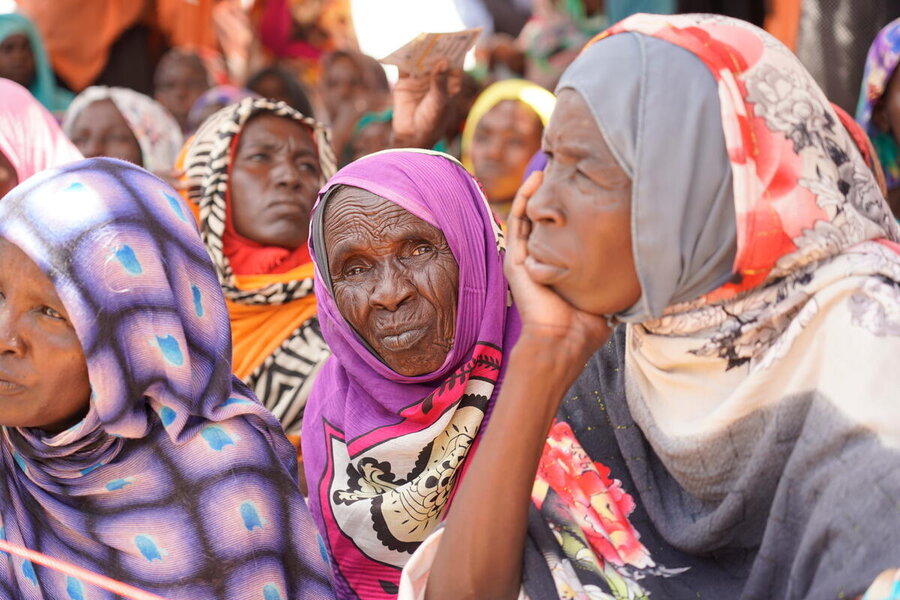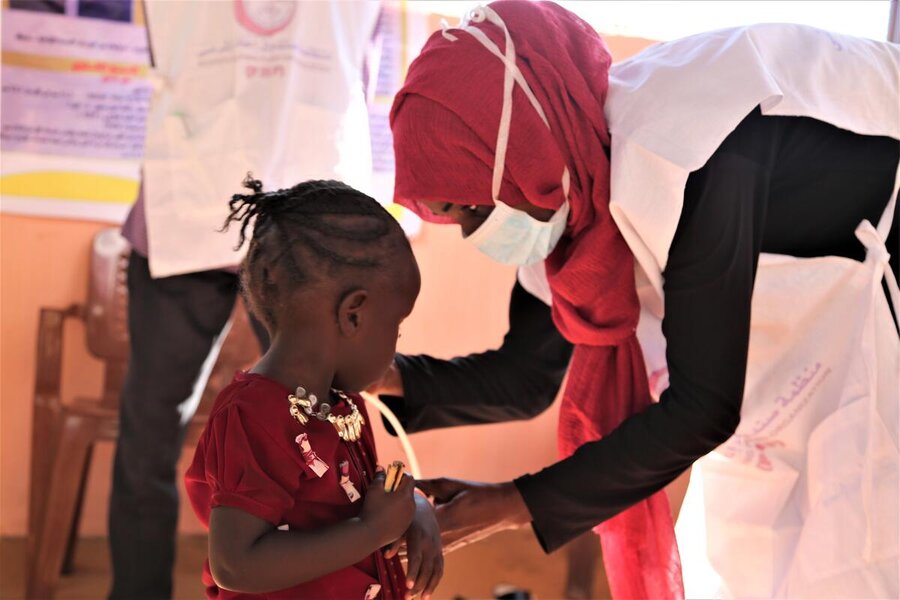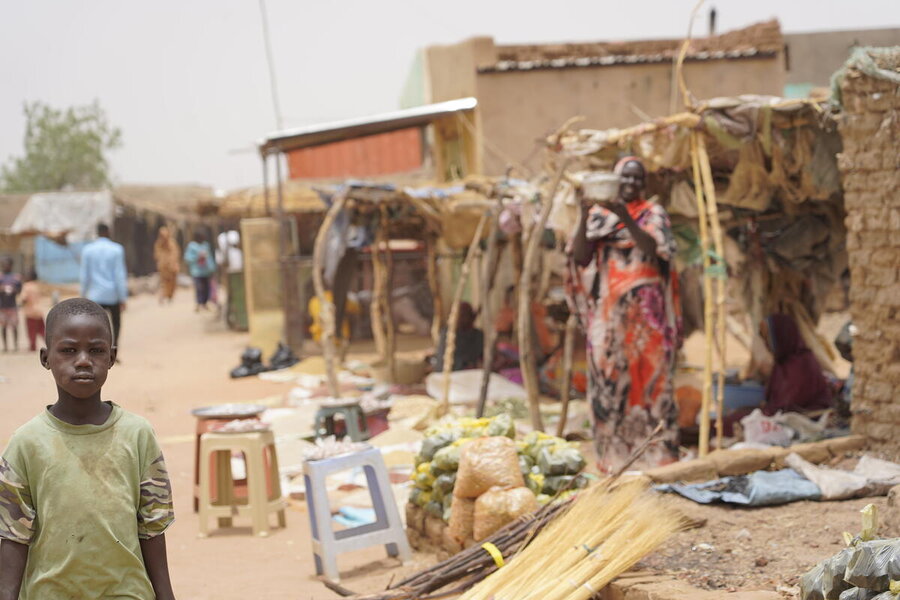Famine in Sudan: WFP calls for unfettered access to hunger hotspots to save lives

Sudan is sliding into catastrophe, with famine conditions recorded in the Zamzam camp for displaced people near the conflict-riven town of El Fasher in North Darfur. Zamzam was among 14 areas identified as being at risk of famine – in conflict hotspots across Darfur, Khartoum, Kordofan and Gezira – in the most recent report by the Integrated Food Phase Classification's Famine Review Committee.
Donate to support WFP's emergency response in Sudan
The World Food Programme urgently calls on all warring parties to allow humanitarian food assistance by freeing up key access points within the country and on its borders. Humanitarian organizations urgently need guarantees of safe passage for those delivering life-saving aid to communities in the most desperate circumstances.

“It is not too late to stop famine from spreading to other parts of the country,” said WFP Executive Director Cindy McCain. “To save lives and prevent widespread starvation in Sudan, we must be able to reach all areas where people are in need.”
She added: “The Sudanese people are counting on us as their lifeline after enduring unimaginable hardship since this conflict began.”

WFP has been warning of a spiralling hunger crisis since war erupted in the country in April 2023 – now, this is the first determination of famine in seven years, meaning people in Zamzam have already started dying of malnutrition and hunger.
The latest figures from the IPC's Famine Review Committee confirm our worst fears. Famine is determined when, in a given area, at least 20 percent of households face extreme food shortages, at least 30 percent of children suffer from acute malnutrition, and the daily death rate exceeds 2 people per 10,000.
Zamzam camp is home to more than 220,000 displaced people facing starvation as more and more people are forced to flee the ongoing fighting in the besieged city of El Fasher – an immediate cessation of hostilities in North Darfur's capital and other conflict hotspots is critical to scale up assistance to people in the most desperate circumstances.
Key facts
- So far in 2024, WFP has assisted more than 318,000 people in areas at risk of famine.
- In El Fasher, WFP supported over 32,000 people (IDPs and residents) with emergency food rations and nutrition assistance between March and June.
- Due to lack of access when fighting erupted in El Fasher in March and continues to escalate, WFP has not been unable to transport aid supplies into Zamzam IPD camp since April. This year, WFP has provided assistance to around 7,300 people in Zamzam IDP Camp, some 9,200 people in El Salam IDP Camp and 13,000 people in Abu Shouk IDP Camp.
- Currently the only authorized cross-border route into the Darfur region is from Tine (in Chad) into North Darfur. However, the Tine crossing is now largely impassable for trucks because of seasonal flooding. The Adre (Chad) border into West Darfur remains closed by the Government of Sudan. This is shrinking the delivery of food supplies to a fraction of what is required.
- The spread of conflict further east to Sinja, in Sennar State is cutting off critical cross-line supply routes to stock up and deliver assistance to affected populations from a key humanitarian hub in Kosti (in White Nile State).
In June, the IPC's food security analysis showed an alarming and rapid deterioration in food security, with nearly 14 million more people facing acute hunger than before the conflict erupted in April 2023.
- Sudan’s war has triggered the world’s largest hunger crisis, as the fighting continues to devastate lives and livelihoods. More than half the population (26 million) is now facing acute hunger – including 755,000 people facing catastrophic conditions (IPC5), with hunger-related deaths already being recorded. One in every two Sudanese is struggling to put enough food on their plates every single day.
- Catastrophic hunger conditions (IPC5) are projected for the first time in the history of the IPC in Sudan. Famine has been declared in one area and 13 others have been declared ‘at risk of famine’ in the coming months.•
- 25.6 million people face acute hunger (IPC3+), up by 45 percent from the December IPC. 8.5 million people are in emergency levels of hunger (IPC4). People facing emergency levels of hunger are also at risk of dying due to hunger-related causes.
- Unlike the Darfur crisis of twenty years ago, this crisis spans the whole country including the capital Khartoum and Gezira State (previously Sudan’s breadbasket)
-
The conflict between the Sudanese Armed Forces (SAF) and Rapid Support Forces (RSF) continues to spread across the country, with clashes currently raging in El Fasher, the capital of North Darfur, and Sennar State in the south-east of the country. Every escalation of fighting makes it more dangerous to deliver assistance and exacerbates humanitarian needs.
WFP’s emergency response in Sudan is made possible through contributions from our donors including the African Development Bank, Belgium, Canada, Cyprus, Czech Republic, the European Commission (ECHO), France, Germany, Greece, Hungary, Ireland, Italy, Japan, KS Relief, Kuwait, Luxembourg, Malta, Mohammed bin Rashid Al Maktoum Global Initiatives (MBRGI), Netherlands, Norway, South Korea, Slovenia, Spain, Sweden, Switzerland, Ukraine, the United Arab Emirates, the UN Central Emergency Relief Fund, and the United States of America.
